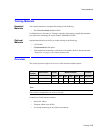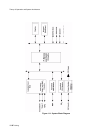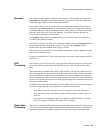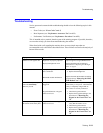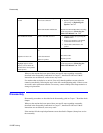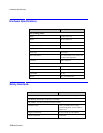Theory of Operation and System Architecture
Training
11-9
Recorder The optional recorder module is installed in the right panel of the monitor. Refer to the C3
Instructions for Use guide for printing procedures. It provides users with the capability to
obtain hard-copy records of selected vital sign information.
Basic control of the recorder is implemented by two push-button controls on the recorder’s
front panel. The Continuous button is used to obtain continuous recordings of the real-time
waveforms displayed in the top two graphic frames. Along with the waveforms, the recorder
prints the values of the vital signs being displayed. The printing continues until the user
presses either recorder button a second time.
The Snapshot button initiates a snapshot printout for 20 seconds of the same information
recorded by the continuous control.
If scrolling is enabled in a display frame containing trend data when the Continuous button is
operated, then the trend record for that vital sign is printed. If the Snapshot button is
operated, then only the trend data on the display is printed.
The recorder may be programmed via the monitor menu display to print a snapshot recording
when an alarm condition occurs.
Printing is accomplished on 50 mm wide thermal paper at recorder speeds programmable up
to 55 mm/s.
ECG
Processing
The technique used in ECG senses the varying potential difference between two points at the
skin surface which respond to the electro-chemical actions of the muscular activity of the
heart.
Three electrodes are attached to the patient’s right arm (RA), left arm (LA) and left leg (LL).
The varying potentials at these locations are cable-connected to the ECG circuit inputs where
they are conditioned, and the difference of potential between two selected leads is digitized
before transmitting through opto-isolators to the processor. The processor-installed algorithms
operate on the signals to develop drivers for the graphic display and to compute the heart rate
in beats per minute (BPM).
In addition to the acquisition of the QRS waveform complex, the ECG input and subsequent
signal processing computing circuitry perform a number of other functions:
• They detect a "lead-off" condition if one of the electrode connections is disrupted.
• They detect the presence of pacemaker signals within the QRS waveform complex of
the ECG.
• They generate a synchronization pulse for external use with defibrillators. The Defib
Sync Pulse output is available at a connector in the rear panel.
Respiration
Processing
The patient’s respiration is detected by using two of the three leads of the ECG electrodes and
cable. A low-level excitation signal is applied to these leads, and the variation of the thoracic
impedance caused by the breathing is sensed and processed for display and measurement.





